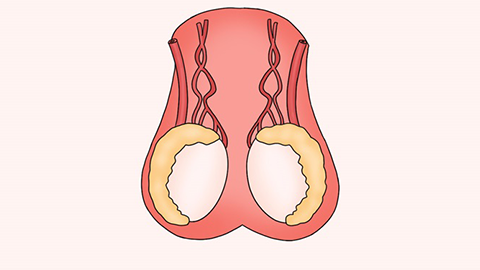How is cryptorchidism treated?
Generally, cryptorchidism may be caused by endocrine abnormalities, abnormal gubernacular development of the testis, anatomical structural abnormalities, congenital inguinal hernia, congenital adrenal hyperplasia, and other factors. It is recommended to seek timely medical advice and undergo treatment under a doctor's guidance, such as hormone therapy, surgical treatment, or medication. A detailed explanation is as follows:

1. Endocrine Abnormalities
During the fetal stage, dysfunction of the hypothalamic-pituitary-gonadal axis may lead to insufficient secretion of gonadotropin-releasing hormone or gonadotropins, or the testes may be insensitive to these hormones, resulting in inadequate production of androgens. This leads to insufficient driving force for testicular descent and thus causes cryptorchidism. It may also be accompanied by delayed development of secondary sexual characteristics. Treatment may follow medical advice using human chorionic gonadotropin.
2. Abnormal Testicular Gubernaculum
Under normal circumstances, the gubernaculum testis guides the testes during their descent. If the gubernaculum is underdeveloped, atrophied, or adhered to surrounding tissues, it cannot properly pull the testes downward, resulting in cryptorchidism. Usually, there are no other obvious associated symptoms. Under medical guidance, orchiopexy can be performed to fix the testis within the scrotum, allowing it to remain in its normal position for proper growth and development.
3. Anatomical Structural Abnormalities
Anatomical issues such as a short spermatic cord, narrow inguinal canal, or poor scrotal development can obstruct the normal descent of the testes. A short spermatic cord limits the mobility of the testis, a narrow inguinal canal hinders its passage, and poor scrotal development fails to provide adequate space for the testis. Typically, there are no other specific associated symptoms. Based on the specific anatomical issue, appropriate interventions can be performed under medical guidance, such as spermatic cord elongation or widening of the inguinal canal, followed by orchiopexy.
4. Congenital Inguinal Hernia
Congenital inguinal hernia often occurs due to failure of the embryonic peritoneal vaginal process to close, allowing abdominal contents to protrude through the unclosed process into the inguinal region, forming a hernia. This occupies space and hinders testicular descent, causing cryptorchidism. It may also be accompanied by symptoms such as abdominal pain and vomiting. Under medical advice, hernia repair combined with orchiopexy can simultaneously address both the hernia and cryptorchidism.
5. Congenital Adrenal Hyperplasia
Congenital adrenal hyperplasia is a group of autosomal recessive disorders caused by enzymatic defects during cortisol synthesis, leading to reduced cortisol production and excessive androgen synthesis. Excess androgens interfere with normal testicular development and descent, resulting in cryptorchidism. It is also accompanied by symptoms such as virilization in females and precocious puberty in males. Under medical guidance, treatment may include medications such as hydrocortisone injection, fludrocortisone acetate tablets, and sodium chloride injection.
In daily life, pregnant women should avoid exposure to harmful substances such as chemical toxins and radioactive materials to reduce the risk of fetal developmental abnormalities. Couples planning pregnancy should undergo preconception checkups to detect and manage any diseases or factors that may affect fetal development in a timely manner.






